COOPER'S HOPPER

Everyone loves hopper patterns! I don’t know of a fly fisherman who doesn’t carry them during the summer and early fall months. It’s a ‘go-to-fly’ during those dog days of summer --- even if you don’t see them on the water. Crickets, deer-flies, ants --- they all take a back seat to the almighty ‘HOPPER’ !
What’s really great about hopper patterns is that, making reasonable pattern adjustments for color and size --- they all work! I’ve had great luck with most every standard pattern that I’ve ever used. But, let’s face it --- some patterns stand out over the others. Today I’m going to share with you one of those patterns.
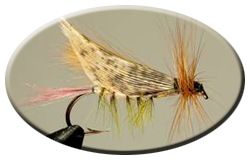
Materials:
- Hook: Mustad #94840 Sizes: 8-12 2X Long
- Thread: Black, 6/0
- Tail: Dark Claret Hackle Fibers
- Body: Light Tan Chenille
- Rib: Green Hackle, palmered
- Underwing: Red Squirrel Hair
- Overwing: Mottled Turkey, tied down, tent style
- Hackle: Reddish-Brown...
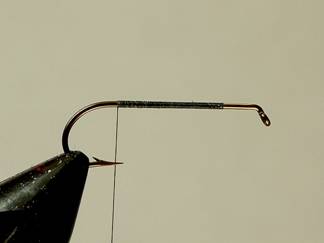
Secure your hook in the vice and tie in a good base of thread.
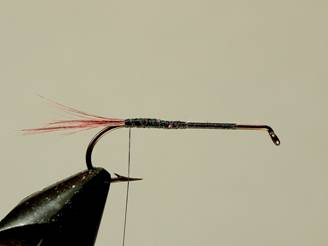
Tie in your hackle fiber tail.
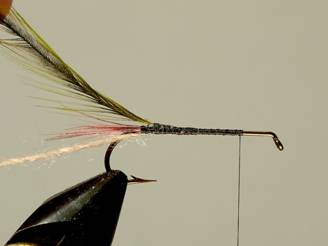 Tie in both the chenille and the green hackle rib at the same time. Run your thread forward.
Tie in both the chenille and the green hackle rib at the same time. Run your thread forward.
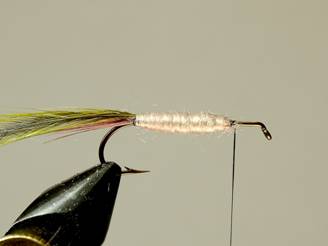
Wrap your chenille body, and tie it off. I like to substitute a natural or synthetic that floats better.
Wrap your rib forward and tie it off.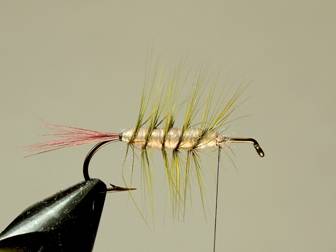
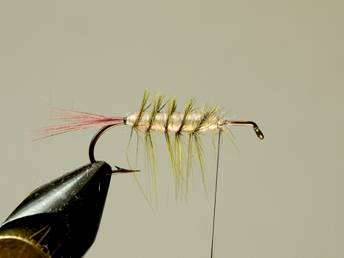
Trim your palmered hackle on the top
(trimming it on the bottom is optional).
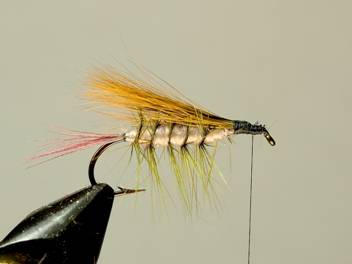
Tie in the underwing of Red Squirrel Hair.
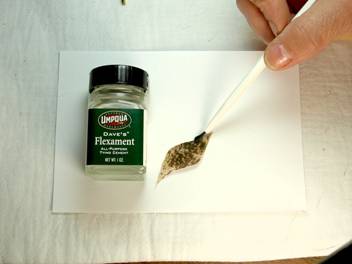 It’s now time to select and cut your wings from the Mottled Turkey Quill. I have always found it beneficial to pre-treat the wings with ‘flexament’ before I tie them in. It makes the wings much easier to handle.
It’s now time to select and cut your wings from the Mottled Turkey Quill. I have always found it beneficial to pre-treat the wings with ‘flexament’ before I tie them in. It makes the wings much easier to handle.
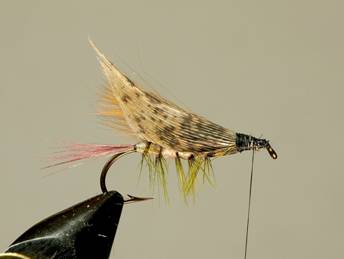
Tie in the wings using standard techniques.
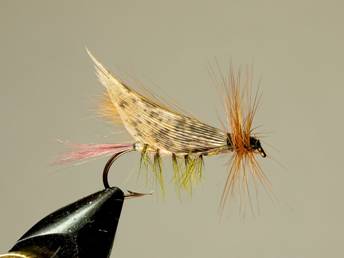
Wrap your hackle and tie it off. Be generous with head cement.
This pattern was created by Ken Cooper, a noted fly tier from Detroit. He developed this fly after spending a summer observing grass hoppers on the banks of the Au Sable River. He created the pattern sometime in the mid 1930’s.
See you on the water…..
Tom Deschaine
For more great info, check out:
Beginning Fly Tying | Intermediate Fly Tying | Advanced Fly Tying.
